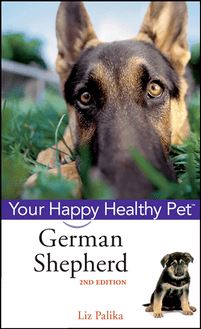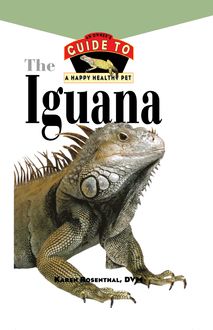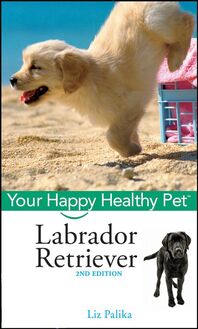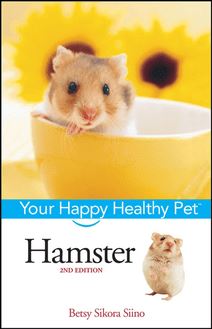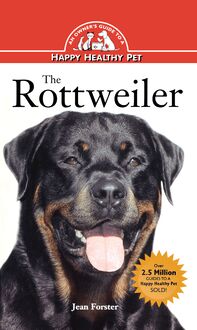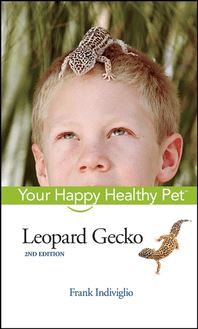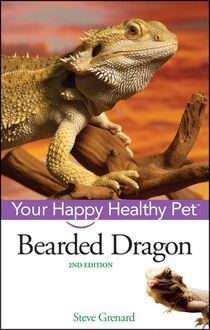Chow Chow , livre ebook
118
pages
English
Ebooks
2007
Vous pourrez modifier la taille du texte de cet ouvrage
Obtenez un accès à la bibliothèque pour le consulter en ligne En savoir plus
Découvre YouScribe en t'inscrivant gratuitement
Découvre YouScribe en t'inscrivant gratuitement
118
pages
English
Ebooks
2007
Vous pourrez modifier la taille du texte de cet ouvrage
Obtenez un accès à la bibliothèque pour le consulter en ligne En savoir plus
Publié par
Date de parution
20 août 2007
Nombre de lectures
1
EAN13
9780470252673
Langue
English
Poids de l'ouvrage
3 Mo
* Expert authors, plus renowned guest contributors on specialized topics
* Full-color photos throughout
* Basic information on the breed, species, or topic
* Complete coverage of care, health, grooming, training, and more
* Tips and techniques to make life with a pet more rewarding
Publié par
Date de parution
20 août 2007
Nombre de lectures
1
EAN13
9780470252673
Langue
English
Poids de l'ouvrage
3 Mo
The
Chow Chow
Howell Book House
Howell Book House A Simon Schuster Macmillan Company 1633 Broadway New York, NY 10019
Copyright © 1996 by Howell Book House All rights reserved. No part of this book may be reproduced or transmitted in any form or by any means, electronic or mechanical, including photocopying, recording, or by any information storage and retrieval system, without permission in writing from the Publisher.
MACMILLAN is a registered trademark of Macmillan, Inc.
Library of Congress Cataloging-in-Publication Data Braun. Paulette The Chow Chow: Ail Owner’s Guide to a Happy Healthy Pet p. cm. Includes bibliographical references. ISBN 0-87605-390-8 I. Chow chows (Dogs) I. Title. SF429.C5B735 1996 95–52288 636.7’2—dc20 CIP
Manufactured in the United States of America 10 9 8 7 6 5 4 3 2 1
Series Director: Dominique De Vito Series Assistant Director: Ariel Cannon Book Design: Michele Laseau Cover Design: Iris Jeromnimon Illustration: Jeff Yesh Photography:
Cover: Paulette Braun/Pets by Paulette
Courtesy of the American Kennel Club: 16, 20
Mary Bloom: 96, 136, 145
Paulette Braun/Pets by Paulette: 2–3, 5, 7, 11, 15, 22, 27, 29, 30, 32, 33, 34, 38–39, 40, 42, 43, 45, 46,47, 48, 53, 54, 59, 61, 62, 65, 66, 67, 69, 73,81, 91,94
Buckinghamhill American Cocker Spaniels: 148
Sian Cox: 134
Dr. Ian Dunbar: 98, 101, 103, 111, 116–117, 122, 123, 127
Dan Lyons: 96
Scott McKiernan: 9, 25, 26
Cathy Merrithew: 129
Liz Palika: 133
Janice Raines: 132
Judith Strom: 13, 96, 107, 110, 128, 130, 135, 137, 139, 140, 144, 149, 150
Kerrin Winter Dale Churchill: 96–97
Production Team: Trudy Brown, Jama Carter, Kathleen Caulfield, Trudy Coler, Amy De Angelis, Pete Fornatale, Matt Hannafin, Kathy Iwasaki, Vic Peterson, Terri Sheehan, Marvin Van Tiem, and Kathleen Varanese
Contents part one Welcome to the World of the Chow Chow 1 What Is a Chow Chow? 2 The Chow Chow’s Ancestry 3 The World According to the Chow Chow part two Living with a Chow Chow 4 Bringing Your Chow Chow Home 5 Feeding Your Chow Chow 6 Grooming Your Chow Chow 7 Keeping Your Chow Chow Healthy part three Enjoying Your Dog 8 Basic Training by Ian Dunbar, Ph.D., MRCVS 9 Getting Active with Your Dog by Bardi McLennan 10 Your Dog and Your Family by Bardi McLennan 11 Your Dog and Your Community by Bardi McLennan part four Beyond the Basics 12 Recommended Reading 13 Resources
part one
External Features of the Chow Chow
chapter 1
What Is a Chow Chow?
The Chow Chow is a dignified, discriminating dog with a serious, scowling expression and a distinctive black or bluish-black tongue and mouth. His lavish coat is accentuated by a lionlike ruff framing a massive yet elegantly carried head. Medium-sized, although his coat makes him appear larger, the Chow Chow has heavy bones and strong, solid muscle. He moves with a unique stilted gait and carries his tail on top of his back, close to the spine. The breed comes in two coat types—the profusely coated rough, and the rarer smooth.
An ancient breed of Chinese origin, the Chow Chow was once used to hunt tigers and bears. Today, the breed is in the AKC Group called
Non-Sporting, a sort of catch-all group for dogs whose original purpose has been phased out by the advance of civilization, as well as breeds that were always loved solely as companions.
The Breed Standard
Every breed has a “standard” that thoroughly explains its appearance. Written by the national club that represents the breed, the standard is like a blueprint in words, describing in detail how the ideal specimen of that breed should look. Reputable breeders think of the standard as an explanation of perfection, and strive to produce animals that come as close to it as possible.
WHAT IS A BREED STANDARD?
A breed standard—a detailed description of an individual breed—is meant to portray the ideal specimen of that breed. This includes ideal structure, temperament, gait, type—all aspects of the dog. Because the standard describes an ideal specimen, it isn’t based on any particular dog. It is a concept against which judges compare actual dogs and breeders strive to produce dogs. At a dog show, the dog that wins is the one that comes closest, in the judge’s opinion, to the standard for its breed. Breed standards are written by the breed parent clubs, the national organizations formed to oversee the well-being of the breed. They are voted on and approved by the members of the parent clubs.
Studying the breed standard is the best way to learn the distinguishing characteristics of a breed. The following is an explanation of the Standard of the Chow Chow as approved by the American Kennel Club in 1986. Actual quotes from the standard are printed in italics, and explanations and comments are in regular type. To help you understand the Chow Chow, this chapter accentuates features that are unique to the breed. For a copy of the complete AKC Standard for the Chow Chow, write to the American Kennel Club, 5580 Centerview Dr., Raleigh, NC 27690–0643.
Starting at the Top
Head — Proudly carried, large in proportion to the size of the dog but never so exaggerated as to make the dog seem top-heavy or to result in a low carriage.
The Chow Chow should be a balanced dog. While his head immediately attracts attention with its large size and exotic expression, it should not be so huge as to overpower the rest of the dog. Also, the Chow properly carries his head in a rather haughty fashion, so the head should never be so massive as to weigh the dog down and prevent him from appearing elegant. On the other hand, the head should never seem small in comparison to the dog’s large bones, muscular body and lavish coat.
The Chow Chow’s head is large and exotic, with furrows of skin contributing to his unique expression.
Expression — Essentially scowling, dignified, lordly, discerning, sober and snobbish, one of independence.
Although the Chow Chow really is an independent dog, his individualistic look is the result of a combination of physical features, not his attitude. The dog appears to be scowling due to a padded button of skin just above the inner corner of each eye, as well as skin on the forehead just loose enough to form the wrinkle that produces the frowning aspect. His brow marking also contributes to the expression as does a noticeable furrow that begins at the base of the muzzle and runs up the forehead. The natural frown turns into an inscrutable oriental scowl thanks to the dog’s widely spaced dark eyes, which are almond shaped and obliquely set.
The Chow Chow’s eye rims should be black, with the pupils of the eyes clearly visible, not hidden by loosely hanging skin. The lids should not turn in or out and shouldn’t droop. This is extremely important, because entropion (lids that turn in, causing hair to irritate the cornea) can lead to excessive tearing, or even loss of sight due to scarring. Ectropion (loose bottom lids that turn outward and droop) also lead to trouble. Hanging lower lids collect airborne irritants, resulting in red, inflamed eyes.
Ears — Small, moderately thick, triangular in shape, with a slight rounding at the tip, carried stiffly erect but with a slight forward tilt. Placed wide apart with the inner corner on top of the skull. An ear which flops as the dog moves is very undesirable.
In the showring, a Chow with a drop ear or with both ears drooping will be disqualified from competition. A drop ear is one that bends at any point from its base to its tip, or one that hangs or droops in any direction. Proper carriage for the Chow Chow ear is fully and stiffly erect.
If your Chow Chow puppy is still very young and has ears that hang like a Labrador Retriever’s, you may be able to help them stand erect. Sometimes a young puppy’s ears don’t stand because they are too heavy with hair, and it’s worth a try to clip the hair off the puppy’s ears. Sure your puppy will look raggedy for awhile, but hair grows back, and by the time it does the ear cartilage will probably be strong enough to hold it proudly erect. Don’t panic if your Chow puppy’s ears go limp during teething time. They will eventually point skyward again on their own.
The top of a Chow’s head should be broad and flat. The muzzle should be short in comparison to the length of the top of the skull, but not exceedingly short. It should also be broad, and appear quite square when viewed from the front. This square aspect comes from good bone structure, full, rather thick lips and proper padding around the muzzle. When the Chow’s mouth is closed, his upper lips should cover his lower lips, but the lips should not be so large or loose that they hang slack.
The Chow has a large, broad nose and well-opened nostrils. Any color nose other than solid black is considered faulty. The exceptions are blue Chows; they may have slate-gray or solid-blue noses.
The teeth should appear strong and even and meet in a scissors bite (upper front teeth meeting tightly outside the lower front teeth).
Mouth and Tongue — Edges of the lips black, tissues of the mouth mostly black, gums preferably black. A solid black mouth is ideal. The top surface and edges of the tongue a solid blue-black, the darker the better.
One of the hallmarks of the Chow Chow is that famous tongue and mouth. Therefore, if the edges of the tongue are pink or red, or even spotted with pink or red, the dog will be disqualified from dog show competition. But don’t fret if your puppy still has some pink showing on her tongue or mouth. Most Chow puppies are born with a pink tongue and a nose that is lighter than black. Nose and mouth pigmentation darkens gradually, and its speed varies a great deal between puppies. One puppy may have dark pigment by a month old, while another puppy’s pigment may not fill in completely until the dog is eight or ten months of age.
F EET, L EGS AND M OVEMENT
Forequarters — Shoulders strong, well muscled, the tips of the shoulder blades moderately close together; the spine of the sho

